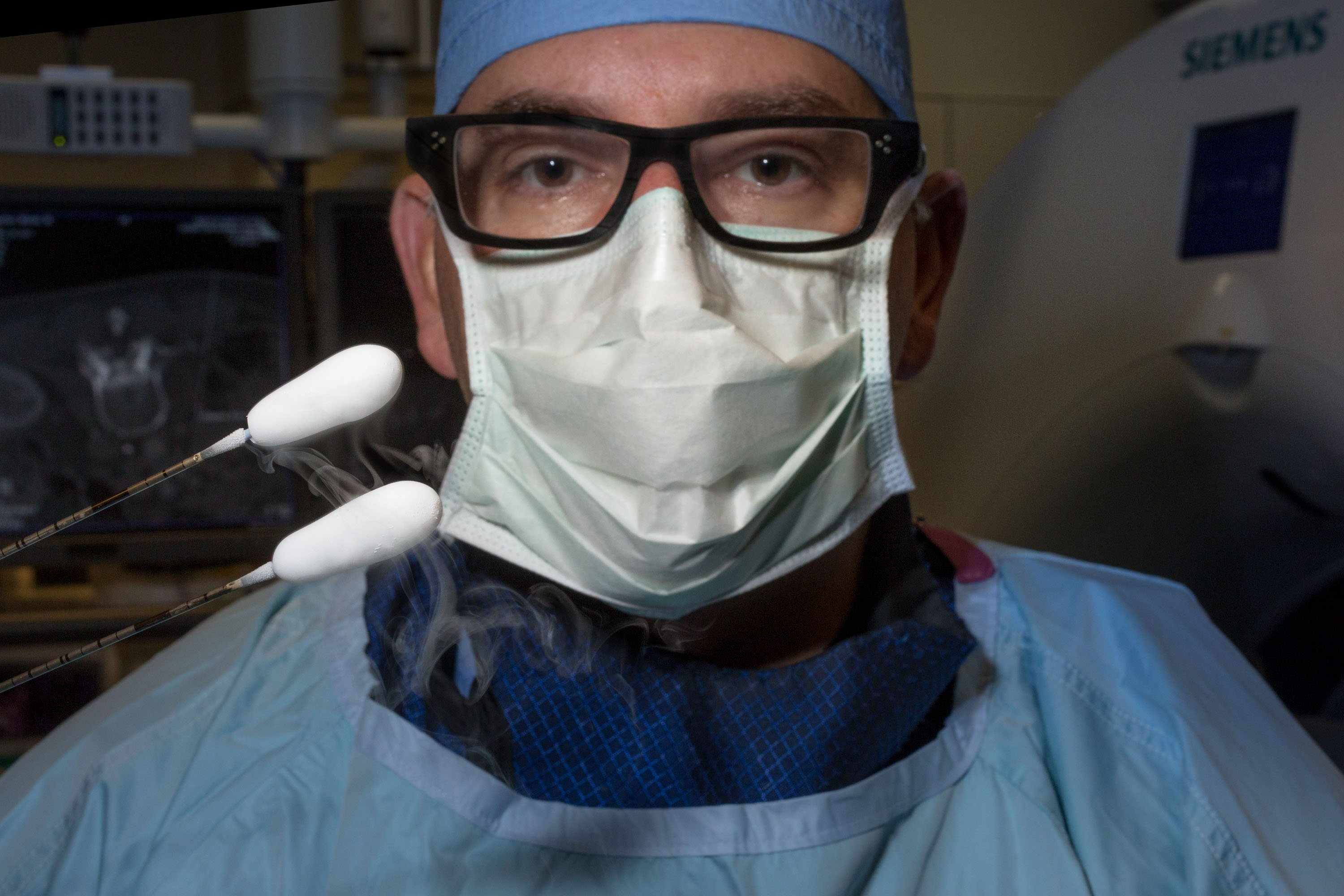 What if you could undergo a cancer treatment that would allow you to walk out of the hospital the next day with just three small adhesive bandages to show for it?
What if you could undergo a cancer treatment that would allow you to walk out of the hospital the next day with just three small adhesive bandages to show for it?
Although this may sound too good to be true, for some patients, including those whose cancer has spread to their spine, it is reality.
“We tried to come up with less invasive ways that we could help patients that have metastasis to the spine,” says Dr. Jonathan Morris, a neuroradiologist who specializes in spine procedures and one of Mayo Clinic’s ablation specialists.
Ablation, the freezing or superheating of tissue ― in this case cancerous tumors ― is one option for many patients seeking cancer treatments.
Like many things in his world at Mayo Clinic, Dr. Morris found his way into spine ablation through a collaborative request from colleague Dr. Matthew Callstrom, an interventional radiologist focused on oncology.
MEDIA CONTACT
Ethan Grove, Mayo Clinic Public Affairs, 507-284-5005, newsbureau@mayo.edu
There was a case that needed extra help in the operating room. Surgeons were wondering if the pair could freeze a spinal tumor as they were resecting it.
Drs. Callstrom and Morris were able to help, and demand took off from there.
“Our practice grew because we were successful in treating these patients who sometimes had no other option,” Dr. Morris says. “It kept progressing to where we had more patients coming in with more and more complex disease — larger tumors or involving multiple spinal bones.”
There are two types of ablation used in the spine or sacrum at Mayo Clinic: radiofrequency ablation, or superheating a tumor, and cryoablation, or freezing a tumor. These techniques have provided a new possibility available to many patients with cancers, along with surgery, radiation therapy and chemotherapy.
Dr. Morris takes on many complex cases that other physicians avoid. And he is able to perform these delicate, complicated procedures because of the collaborative environment that Mayo Clinic fosters.
“At Mayo Clinic, we offer not only medical oncology, radiation oncology, surgery, and holistic approaches, but I think having ablation in your arsenal, particularly spine ablation — which is very unique in the world because of the potential risk — is a tremendous benefit,” Dr. Morris says. “We have learned to do this safely and effectively because of our collaborative help from Anesthesia and Neurology. We want to give our patients one more tool in their fight against cancer.”
Decisions about the right treatment for patients depend on tumor type and what treatments already may have been completed. In some cases, ablation is the first option, and, for other patients, it can be the second, third or final option, Dr. Morris says.
“I think the benefit of Mayo Clinic is that you have a multidisciplinary team working on your care. Teams aren’t in silos who don’t talk to each other,” he says. “When patients come to Mayo Clinic to get oncologic or cancer care, there’s a team of doctors who are ready to help them, and their appointments aren’t spread out over weeks and months. They see everybody they need to see within a week’s time, usually. They get all the laboratory testing they need; they get all the imaging they need so a plan can be developed in tandem.”







